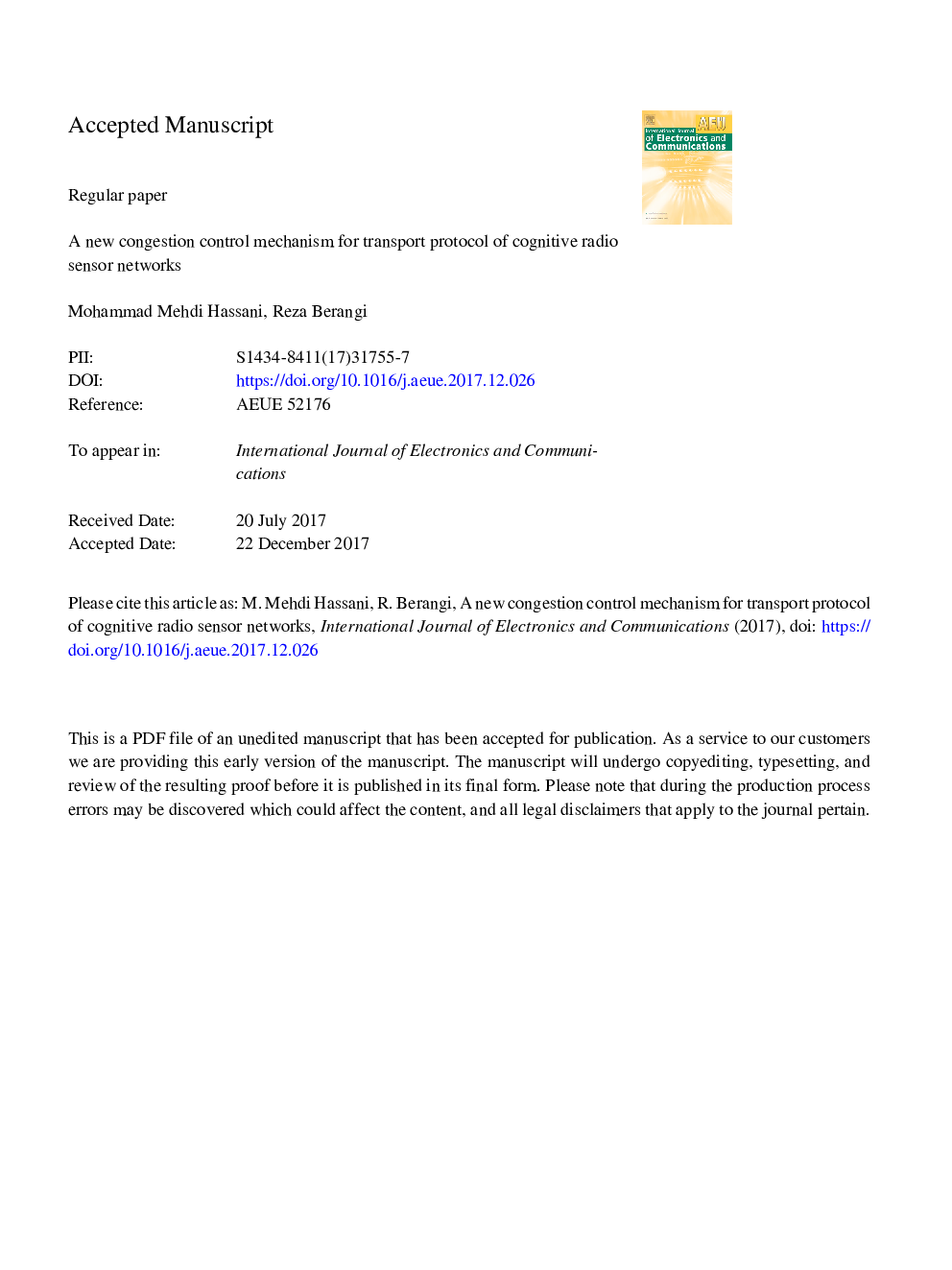| Article ID | Journal | Published Year | Pages | File Type |
|---|---|---|---|---|
| 6879516 | AEU - International Journal of Electronics and Communications | 2018 | 26 Pages |
Abstract
Cognitive Radio Sensor Network (CRSN) is a promising solution to overcome spectrum under-utilization and spectrum scarcity in a resource-constrained Wireless Sensor Network (WSN). In CRSN, TCP has to cope with a new type of packet loss due to the Primary Users (PUs) arrival, known here as the secondary user blocking loss (SBL). In this paper the SBL is modelled by a discrete-time Markov Chain (DTMC). A new congestion control algorithm, known here as T-CRSN is proposed based on this model that differentiates the packet loss due to the PU activity from the congestion loss. The numerical evaluation of the model is verified using the COGNS, a NS2 simulation based framework for cognitive radio sensor networks. Furthermore, the proposed algorithm is compared with some of the recently proposed transport protocols, i.e. TCP Friendly Rate Control for cognitive radio (TFRC-CR), Opportunistic Hybrid Transport Protocol (OHTP) and TCP Reno to comparatively demonstrate the efficiency of our proposed algorithm.
Keywords
Related Topics
Physical Sciences and Engineering
Computer Science
Computer Networks and Communications
Authors
Mohammad Mehdi Hassani, Reza Berangi,
